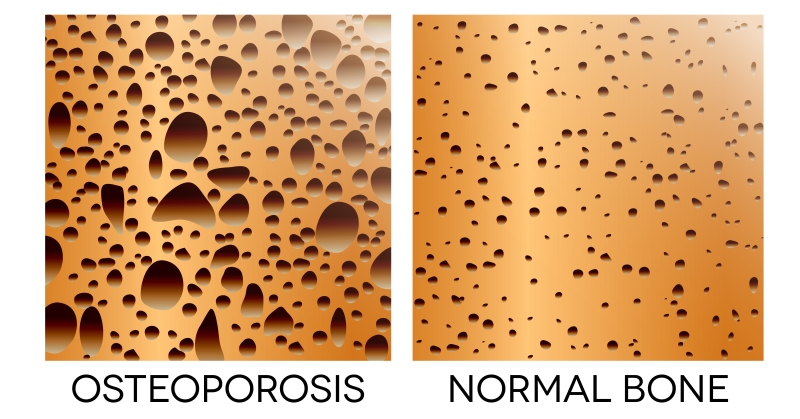Do you ever crave a nice, cold glass of cow’s milk? Maybe when you are eating breakfast, indulging in a delicious dessert or when you grab a box of cereal from the cupboard? We’ve all heard about the supposed benefits of milk, especially for growing children — “it does a body good,” it builds strong bones” — and you probably had your fair share of milk growing up, at the firm advisement of your parents. The ‘Got Milk’ campaign, aimed at getting the consumer to drink more milk, launched in 1993 when milk sales were steadily dropping. We saw the popular milk mustache on athletes and celebrities, smiling and chugging away with the promise of strong bones and teeth. Milk is a must-have item on grocery lists nationwide, but what is it really doing to our bones?
The cow’s milk sitting on the refrigerator shelves at the grocery store is pasteurized. Pasteurization is a process that applies heat to destroy pathogens in food, with the goals of killing disease-carrying germs and preventing milk from going sour too early. During this process, every particle of the fluid is heated to a required temperature then rapidly cooled. Here’s the problem: pasteurization also kills off the beneficial bacteria (probiotics), and even destroys some of the nutritious content in milk, like vitamin C and iodine. It also destroys the enzymes in milk. These lost enzymes make it harder on your body to get calcium and phosphorus out of the cow’s milk. Countries with the highest rate of dairy consumption, (the U.S. and countries in the European Union) also have the highest rate of osteoporosis. We’ve been told for years that drinking plenty of milk will ensure that our bones stay strong and healthy, but these recent studies show the exact opposite to be true.
Raw milk is not much better!
The cows used to generate the cartons or gallons of milk in the grocery store are not natural cows. They are being pumped with a growth hormone called rBGH, a genetically engineered artificial hormone injected into dairy cows to make them produce more milk. While the use of this hormone is not permitted in Japan, Australia, Canada or the European Union due to animal and human health concerns, it is widely utilized in the U.S. to increase milk production by 10 to 15 percent.
The milk produced from these cows can contain as many as 20 painkillers, antibiotics and growth hormones in a single glass of milk, which some studies have linked to excessive tumor growth and cancer. The cows are typically fragile and prone to disease, and their milk contains large amounts of pus. This is where the pasteurization process comes in. The milk goes through a quick heating process that produces no guarantee of cleanliness. In fact, multiple salmonella outbreaks in recent years have occurred from pasteurized milk — milk that’s supposed to be clean.
Once milk goes through the pasteurization process, it becomes an acidic food (loss of natural health-giving electrons), which presents a problem. The body must maintain a particular pH level in order to maintain homeostasis. The more processed and refined foods we eat, the more acidic our bodies become, creating the constant need to find ways to keep the pH level in check. This is done by leaching alkaline minerals (calcium, magnesium) from other places in the body — including the bones. Over time, this constant process causes bones to become weak, frail, and riddled with osteoporosis. Tumors also thrive in an acidic environment. The more milk we drink (and the more acidic foods we eat), the more we are destroying our bones.
>Next time you are planning a trip to the grocery store, you may want to consider researching a few healthier alternatives and leave pasteurized milk out of your cart. Got Milk?
Here’s how to make almond milk at home.
https://www.youtube.com/watch?v=xmDt_dSje3g


